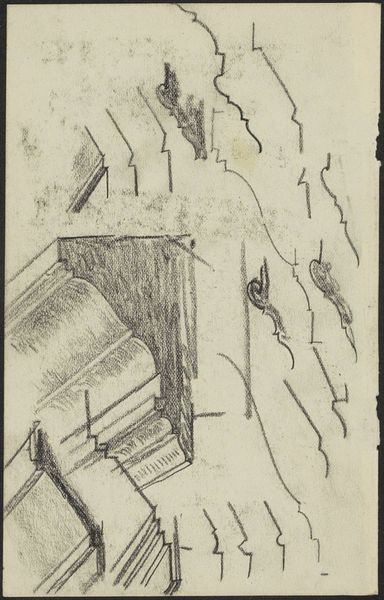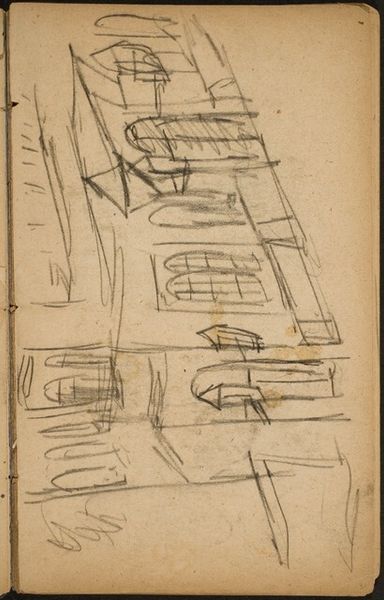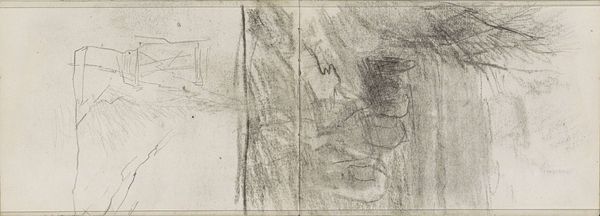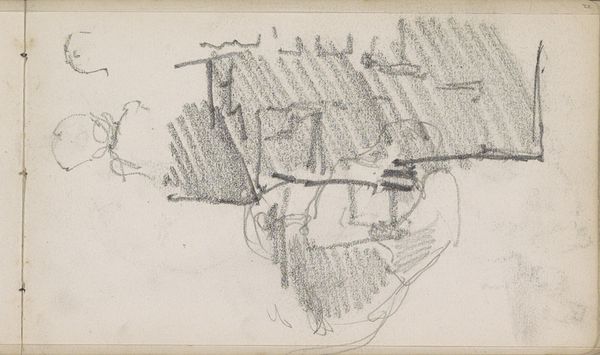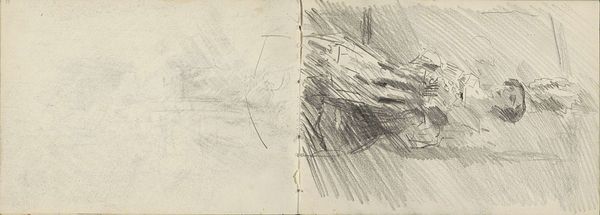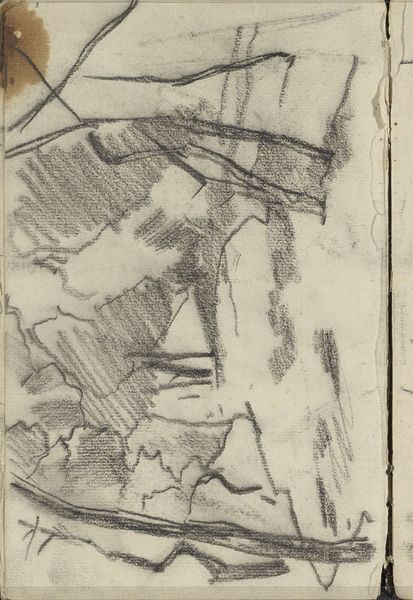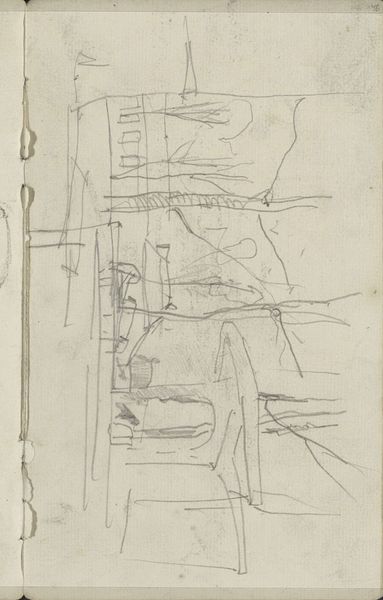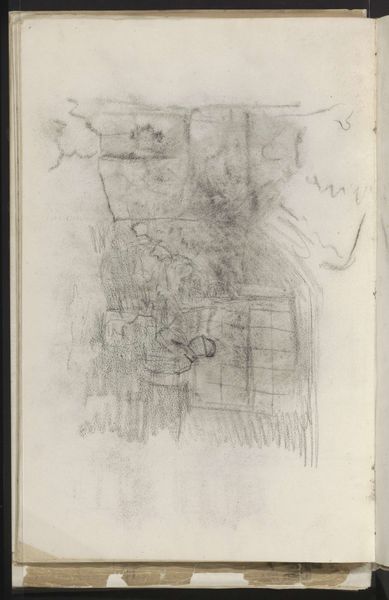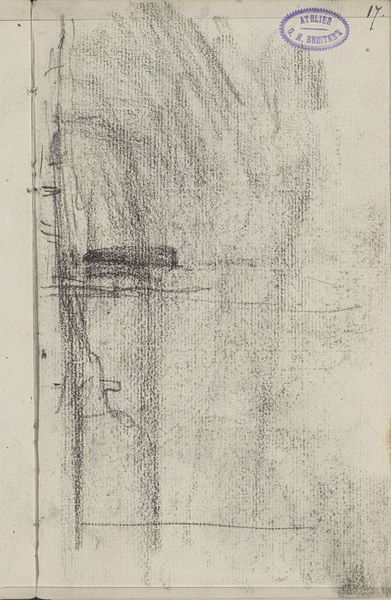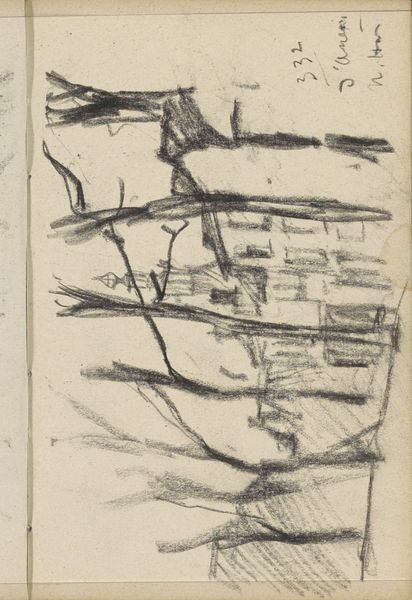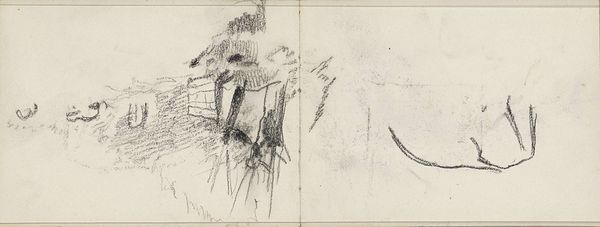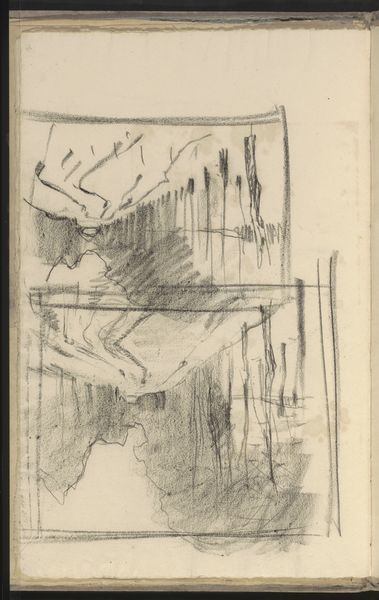
drawing, pencil, graphite
#
drawing
#
dutch-golden-age
#
pencil
#
graphite
#
cityscape
#
realism
#
building
Copyright: Rijks Museum: Open Domain
Curator: This is George Hendrik Breitner’s "Gevel met ramen," or "Facade with Windows," likely created between 1883 and 1885. It's a graphite drawing, a glimpse into urban life from the late 19th century, currently residing here at the Rijksmuseum. Editor: Immediately, I’m struck by the stark contrasts and the implied movement in what should be a static subject. It’s not a pretty cityscape, is it? It has an almost melancholic feel to it. Curator: Breitner, deeply embedded in the Realist movement, sought to portray the unvarnished reality of Amsterdam. It is a window into the everyday for many Amsterdammers during a period of great urban change and industrial labor. Look at the way he uses the graphite, quite economical and pragmatic, to create form. It isn't necessarily about aesthetics as it is about bearing witness to a place and time. Editor: Precisely, and if we situate this within a broader narrative, it's also a statement. Think about who had access to portrayals like this? Who benefited from and perhaps even profited from the realities of city living represented? Curator: The physical application—the marks on paper—suggest a quick study. Perhaps he captured the windows repeatedly, driven by the sheer act of rendering visible the city's buildings and architecture of daily labor, one after the other, window after window. Editor: I wonder what social class Breitner sought to elevate, and for what purpose? The unrefined style of his mark-making perhaps suggests a raw reality—and what about the viewer? What perspective is being framed and for whom? This drawing opens a dialogue around identity, class, and urban politics in the Netherlands. Curator: Consider the urban development of Amsterdam and the changing conditions for factory labor in those windows as consumer society transformed due to new forms of labor that were available in factories. Editor: So, Breitner offers not just a record of physical spaces, but also prompts us to consider the narratives of individuals intersecting with these urban spaces during his lifetime, at a pivotal time. Curator: It's about the materiality of labor reflected even in this depiction of "just" the windows and facade, captured in simple graphite on paper. Editor: It offers such a unique window to view Dutch history in a compelling way! Curator: Precisely. It is a fine display of material realities captured from life.
Comments
No comments
Be the first to comment and join the conversation on the ultimate creative platform.
